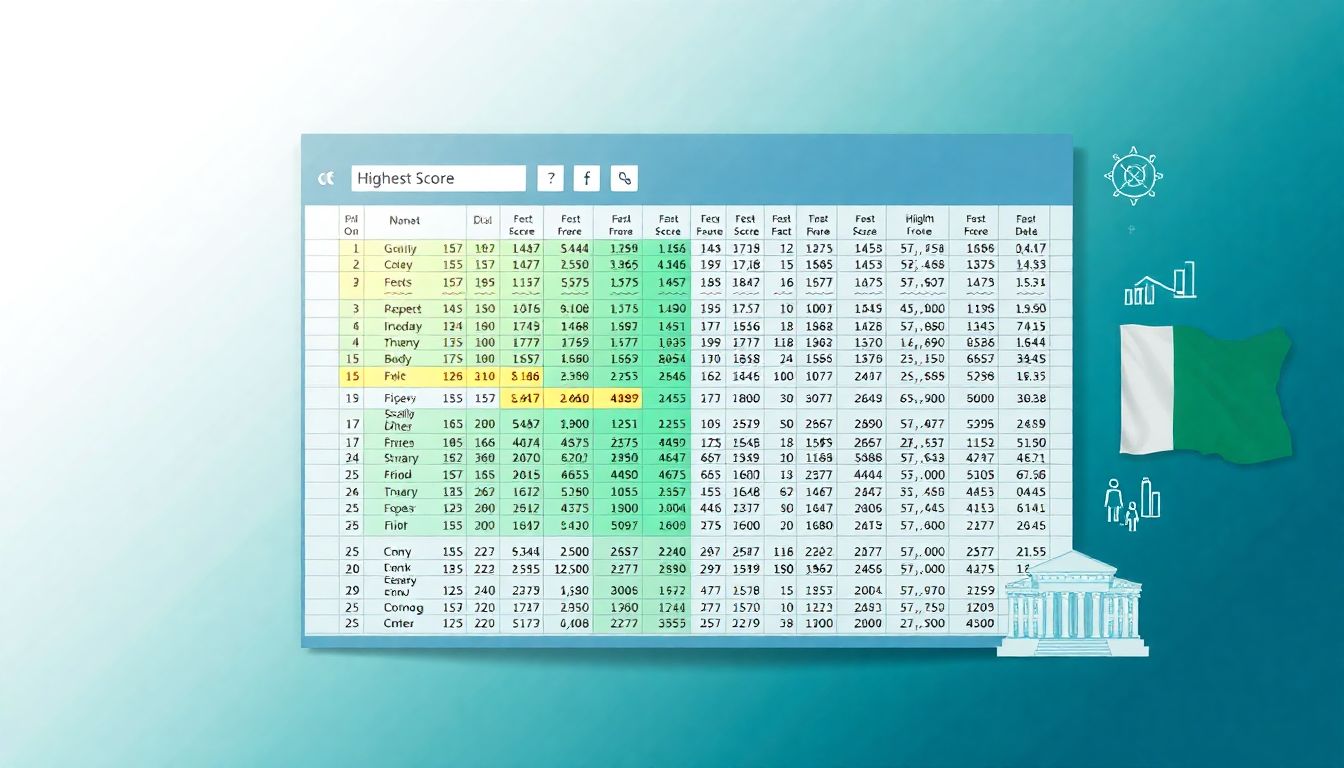
The Nigerian Common Entrance Examination holds great importance for students who aspire to enter secondary schools across the country. This exam not only determines access to top schools but also shapes the educational journey of countless young learners. Given the weight of this exam, many students and their families are left wondering: what is the highest score ever recorded?
The Allure and Intensity of the Nigerian Common Entrance Exam
The Common Entrance Exam serves as a crucial stepping stone for students aiming for secondary education in Nigeria. The stakes are high, making it vital for students to perform well. With intense competition, every score can influence future academic and career opportunities.
The Stakes: Why the Common Entrance Exam Matters in Nigeria
- Access to Quality Education: Achieving a high score can lead to admission into prestigious schools.
- Scholarship Opportunities: Many schools offer scholarships based on exam performance.
- Parental Expectations: The pressure from families can significantly impact students' preparation and mindset.
Competition and Aspirations: Understanding the Pressure on Candidates
Numerous students across the nation compete for limited spots in elite schools. This competitive landscape often results in heightened anxiety among candidates. Many students invest long hours in studying, trying to outscore their peers.
Setting the Stage: Exploring the Exam's Structure and Scoring System
The Common Entrance Exam typically comprises various subjects including Mathematics, English, and Science. Understanding how these subjects are scored is crucial for aspiring students.
Understanding the Common Entrance Exam Scoring System
Marking Scheme Breakdown: Points for Each Section
Each subject in the Common Entrance Exam carries specific weight. For example:
- Mathematics: 40 marks
- English Language: 40 marks
- Science: 20 marks
Total Possible Score: Clarifying the Maximum Achievable Marks
The total marks achievable in the exam is 100. Candidates are encouraged to aim for the highest possible scores to improve their chances of admission into reputable schools.
Grade Distribution and Interpretation: How Scores Translate to Performance
- 85-100: Excellent
- 70-84: Very Good
- 50-69: Good
- Below 50: Needs Improvement
These grades help to assess a candidate's performance relative to their peers.
Historical Trends and Highest Recorded Scores
Analyzing Past Results: Identifying Top-Performing Years
Over the years, some years have stood out for remarkable results, with various candidates achieving the highest scores. These exceptional performances often generate buzz in educational circles.
Exceptional Candidates: Showcasing Achievers and Their Stories
While specific data may not always be available, stories of top scorers like Mary, who achieved a perfect score of 100, inspire many. Her commitment to studying and strategic preparation techniques can serve as a model for future candidates.
Data Limitations and Challenges in Accessing Comprehensive Records
Despite the desire for data on high scorers, comprehensive records can be difficult to locate. Lack of standardization in data collection can hinder studies related to exam performance.
Factors Influencing High Scores in the Common Entrance Exam
Effective Study Habits and Time Management: Strategies for Success
Candidates who develop good study habits often see great results. Effective time management can enhance preparation, helping students cover all necessary subjects without feeling overwhelmed.
Quality of Education and Access to Resources: The Role of Schools and Support
Students attending well-resourced schools tend to perform better. Access to quality learning materials and competent teachers can greatly influence exam readiness.
Natural Aptitude and Talent: The Importance of Individual Abilities
While preparation is key, natural aptitude plays a significant role in student performance. Some students may grasp mathematical concepts quickly, while others excel in language arts.
Preparing for the Common Entrance Exam: Proven Strategies for Success
Exam-Specific Preparation: Targeted Practice and Mock Tests
Mock tests are essential as they familiarize students with the exam format. Practicing under timed conditions can also build confidence.
Developing Effective Study Techniques: Prioritizing and Mastering Concepts
Students should focus on weaker subjects to improve overall scores. Breaking down subjects into smaller, manageable topics allows for better retention.
Seeking Support and Guidance: Utilizing Resources from Teachers and Tutors
Teachers and tutors can provide personalized guidance, helping students navigate challenging areas. Joining study groups can also enhance learning through group discussions.
Conclusion: Aspirations, Achievements, and the Future of the Common Entrance Exam
The Nigerian Common Entrance Exam is not just a test, but a doorway to future possibilities. Students aspire for high scores, knowing the impact that these results will have on their educational journeys.
Key Takeaways: Recap of Key Insights and Information
- A perfect score in the Common Entrance Exam is 100.
- Competitive pressures drive students to excel.
- Preparation strategies significantly influence outcomes.
Looking Ahead: Trends and Predictions for Future Exams and Success
As the education landscape evolves, the importance of the Common Entrance Exam remains steadfast. Future candidates will continue to strive for excellence, shaping their destinies one exam at a time.